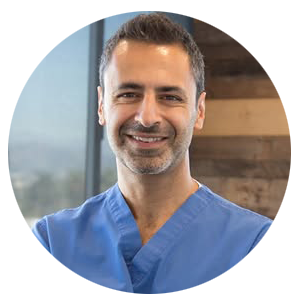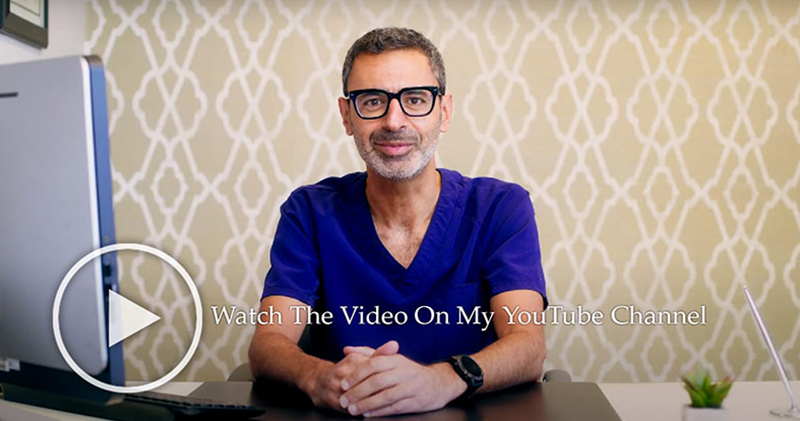Gynecomastia in Older Men
Written by Dr. Babak Dadvand
There are many different causes of gynecomastia, from medications to endocrine disorders. One common cause that affects older males is physiologic gynecomastia. This refers to natural imbalances in testosterone-to-estrogen ratios that can lead to excess estrogen activity and feminization of the male breast. Dr. Dadvand, a double board-certified plastic surgeon, specializes in performing gynecomastia surgery on older patients in Los Angeles. If you are interested in working with Dr. Dadvand, contact his practice and book a consultation today.
At What Age Does Physiologic Gynecomastia Occur?
Physiologic gynecomastia may occur during the following ages:
- Newborn: More than half of male infants are born with enlarged breasts due to the effects of their mother’s estrogen. In a large majority, the swollen breast tissue goes away within two to three weeks after birth.
- Puberty: Gynecomastia caused by hormone changes during puberty can occur in up to 69% of boys. In most cases, the swollen breast tissue will go away without treatment within two years.
- Middle-age and older: The prevalence of gynecomastia in older patients peaks between the ages of 50 and 80. At least 1 in 2 men in this age group are affected.
As a man reaches middle age, the amount of circulating testosterone decreases. This is usually in conjunction with an increased amount of subcutaneous fat. This increased fatty tissue leads to an elevated conversion of androgens, like testosterone to estrogen. This is done by a hormone called aromatase. The combination of decreased testosterone levels and increased conversion of testosterone-to-estrogen plays a large role in the heightened prevalence of gynecomastia in this age group.
Of course, there are other causes of gynecomastia in men aged 50 to 80. Medical issues such as liver disease, hyperthyroidism, and certain medications, can cause gynecomastia as well. These potential causes need to be ruled out during the consultation.
Ideal Candidates for Gynecomastia Surgery
The protocol for treating gynecomastia in older men follows basic surgical guidelines and principles. First, the patient must be in generally good health. There is no defined upper age limit for gynecomastia surgery. However, medical issues, such as hypertension, diabetes, and similar conditions must be under control prior to surgery. In older men, the main difference in the surgery compared with younger men has to do with their skin tone and nipple position.
Risks Associated with Gynecomastia in Older Men
Some of the potential risks and temporary side-effects associated with gynecomastia surgery for older men include:
- Possible adverse reaction to anesthesia
- Breast asymmetry
- Discomfort and numbness during the procedure
- Visible scarring
Why Choose Dr. Dadvand for Gynecomastia Surgery Due to Old Age in Los Angeles?
Dr. Dadvand is well aware of the psychological effect of gynecomastia on men of all ages in LA, including older men. He has dedicated a large part of his practice to helping these patients eliminate the appearance of a feminine male chest and improving their quality of life.
As we get older, we lose elastin in our skin which leads to decreased tone. Therefore, in certain cases, gynecomastia surgery performed by Dr. Dadvand in older men also needs to address the loosened skin and possible repositioning of the nipple and areola. This allows for the most ideal contour and best results. This is also why it is important to work with a highly trained and experienced gynecomastia surgeon like Dr. Dadvand.
To learn more about Dr. Dadvand and his gynecomastia surgery for older males in Los Angeles, get in touch with his practice and book a consultation today.
FAQs
What is gynecomastia surgery?
Gynecomastia surgery is a procedure to treat enlarged male breasts. This procedure focuses on removing glandular material, which is responsible for the feminine look that many patients want to improve. While this procedure does require an incision, it is relatively safe surgery with a high success rate.
Can gynecomastia be treated with medication?
At the time of writing this page, there are no FDA-approved medications designed to treat gynecomastia. This condition can be caused by a variety of factors, including certain drugs, hormonal imbalances, and other elements that need to be addressed to prevent the re-development of this condition.
How can I get rid of gynecomastia fast?
The fastest treatment available to treat gynecomastia is surgery. Gynecomastia surgery produces immediate results, which means that you will notice a visible difference as soon as you finish the recovery period.
What prescription drugs can cause gynecomastia?
Some of the prescription drugs that are known to cause gynecomastia as a side-effect include CNS-acting medication, antiulcer drugs, and hormones. Additionally, there are many illicit drugs and recreational substances that can produce gynecomastia, like alcohol, anabolic steroids, amphetamines, and similar substances.
What exercises can I do to lose breast fat?
In some cases, exercise can help men reduce the fat deposits that cause gynecomastia. However, when this condition is caused by glandular tissue, exercise is rarely an effective course of action. In order to find the best approach to eliminate male breasts, you should consult with a gynecomastia expert in your area.

By Dr. Babak Dadvand, M.D.
As a board-certified plastic surgeon and skilled portrait artist, I bring a distinctive combination of artistic vision and surgical expertise. My commitment is to deliver exceptional outcomes while maintaining the highest ethical standards and fostering trust and satisfaction among my patients.



